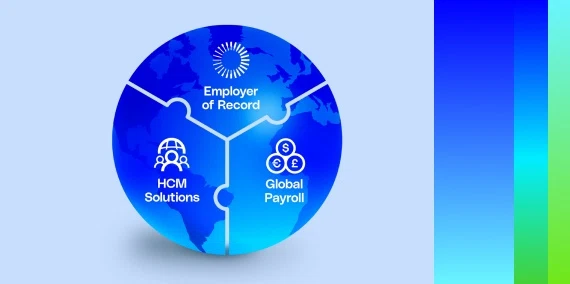When your business grows, you’ll confront new laws and employment processes in different countries. Benefits planning is one of many undertakings. With the right approach, your employee benefits planning in Vietnam can make your company competitive.
Vietnam compensation Laws
The primary law governing employee benefits and compensation in Vietnam is the Labor Code 2019.
A decree was issued by the government in 2021 to provide a minimum wage applicable to all employers. Currently, there are 4 regional minimum salary levels applicable to employers, ranging from VND 3,250,000 (the lowest level) to VND 4,680,000 (the highest level) per month, depending on the region set out in the table below (effective July 2022). Employers are required to pay a salary to their employees which is not lower than the minimum salary level applicable in their region for untrained workers performing tasks considered simple. For trained workers, the salary must be at least 7% higher than the regional minimum salary.
The monthly minimum wages by region effective until June 30, 2024, are listed below:
- Region I – VND 4,680,000
- Region II -VND 4,160,000
- Region III – VND 3,640,000
- Region IV – VND 3,250,000
Employees who work more than the standard 8-hour day or 48-hour workweek should get paid for overtime. The overtime pay is at least 150% of the actual hourly wage on a normal working day, at least 200% on a weekly day off, and at least 300% on a public holiday or paid days off.
Guaranteed benefits in Vietnam
Before you consider fringe benefits, you need to ensure you meet the requirements outlined in the labor laws. In Vietnam, employers are required to provide:
- Annual leave
- Time off for public holidays
- Social insurance contributions
- Health insurance contributions
- Unemployment insurance contributions
Vietnam benefits management
Your benefits plan should support your company’s growth. With the proper planning, your benefits can encourage job seekers to apply for your vacancies over those of competitors. Benefits can also improve morale within the workplace and increase retention rates, limiting the need for you to onboard and train new hires.
Fringe benefits, or provisions not required by law, might include:
- Holiday bonuses
- Housing allowances
- Transportation stipends
- Gym or club memberships
- Allowances for living costs
- Supplementary health and life insurance
Designing Vietnam employee benefits plans
When it’s time to start planning, you might feel challenged by the design process. You need to find a balance between your resources and your employees’ needs. With the right research and preparation, a competitive plan is within reach.
1. Review your financial resources.
Without a clear understanding of your financial resources, it’s easy to overextend your business. It’s helpful to build your budget spending into your expected revenue to manage your income. If you’re starting with relatively low revenue, you’ll need to be modest with your fringe benefits.
2. Research the market.
You need to understand the labor market to become competitive within it. Research the companies in your area to find out what types of benefits they offer their employees. The regular occurrences in the market will inform employees’ expectations.
Speaking directly to employees can also help you create competitive benefits plans. Distribute surveys or conduct interviews to learn more about what workers want from their employers.
3. Design a plan.
With your market information and company budget, you can start building a benefits plan. First, allocate funding to any required benefits. You can use your remaining budget to provide fringe benefits, prioritizing the most valuable ones based on your research.
Average cost of benefits
Many characteristics determine how much a company pays for benefits, including location, size, and industry. With the wide variety of potential expenses, an average cost isn’t a useful tool in terms of creating a plan. You should create a benefits budget unique to your revenue and expenses. You might set it as a percentage of your revenue so your spending can grow with your business.
This arrangement simplifies future budget management and makes costs evident earlier in the process. This way, you can build a company that competes with other enterprises in the labor market.
How to calculate benefits
Benefits calculations are often straightforward. For example, you might choose to provide a 13th-month bonus for your teams. Determine the amount you’d like to spend and divide it among your workforce.
For some other benefits, like social insurance contributions, calculations are outlined in the country’s labor laws. Laws in Vietnam require employers to contribute 17.5% of employees’ earnings on their behalf. Employees must contribute 8%.
How are employee benefits taxed in Vietnam?
All benefits, whether in cash or in kind, are subject to personal income tax. Employers must determine the cash value for benefits in kind and factor the cost into employee paychecks. Companies must include these benefits in income calculations for payroll tax deductions.
Employee health benefits
Vietnam’s public healthcare system receives funding from the national health insurance scheme. This setup is still in the developmental stage, but it does support free care for people in the country. Employers are required to contribute to the national insurance scheme.
Private hospitals in urban centers offer more advanced care, but they come with costs. Employers are not required to provide supplemental insurance for these facilities. That said, they may choose to do so as a part of their fringe benefits.
Partner with G-P to build your everywhere workforce.
As your partner in global expansion, G-P will handle payroll and compliance, so you can focus on growing your team and scaling your business. Our market-leading Global Growth Platform™ is powered by the first fully customizable suite of global employment products and backed by the industry’s largest team of in-country HR and legal experts to streamline payroll management and help you offer competitive, compliant local benefits.
Learn more about our platform and request a proposal today.






